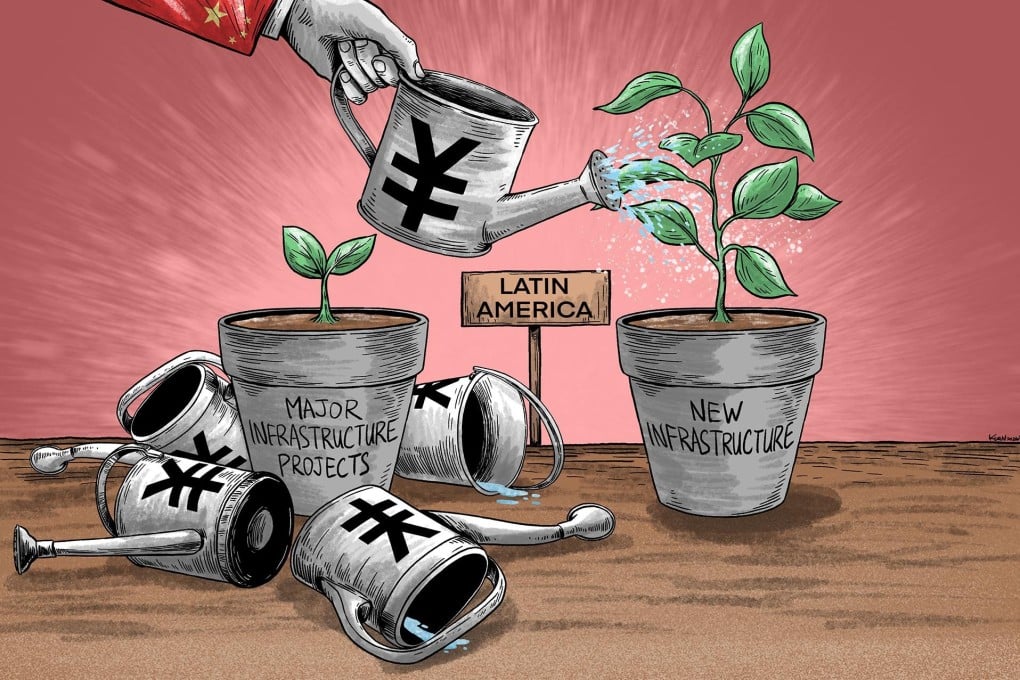China’s Latin American investments downshift to smaller, more strategic projects
- High-risk, high-cost mega-infrastructure projects like those backed by Belt and Road Initiative decline in popularity
- Developments now seen to come from sectors like electric vehicles, which have faster returns and fewer operating costs

Over the past two decades, China’s presence in Latin America has been synonymous with major infrastructure projects and the exploitation of natural resources. A recently published study suggests, however, that the wind is now blowing in a different direction.
Following the failure of some Belt and Road Initiative investments in the region and a slowdown in China’s economy, data analysed by the Inter-American Dialogue, a Washington think tank, indicates that Chinese money is now flowing into other areas – away from large projects and towards smaller, more strategic ones in line with Beijing’s economic growth objectives.
According to the Inter-American Dialogue report, China invested an average of US$14.2 billion annually in Latin America between 2003 and 2022; in that last year, though, investments fell to US$6.4 billion.
Margaret Myers, one of the study’s main researchers and director of its Asia and Latin America programme, said that the years of large, high-risk projects have led to a reorganisation of priorities in Beijing. She believes that the Chinese economic slowdown has led several companies, whether state-owned or private, to favour smaller investments, with faster returns and requiring fewer operating costs, such as building roads, bridges, railways, or airports.

Myers cited the Coca Codo Sinclair dam, a project in Ecuador financed and built with Chinese money. The dam, announced in 2010 as a flagship belt and road infrastructure project in Latin America, cost US$2 billion, of which US$1.7 billion was financed by a loan from the Export Import Bank of China.
The project was touted by Rafael Correa, then the Ecuadorian president, as the most ambitious and comprehensive infrastructure project in the history of his country’s energy industry. Opened in 2016, the dam was also seen as a key part of a green energy transition plan, as it would significantly reduce Ecuador’s dependence on thermoelectric energy generated by fossil fuels.